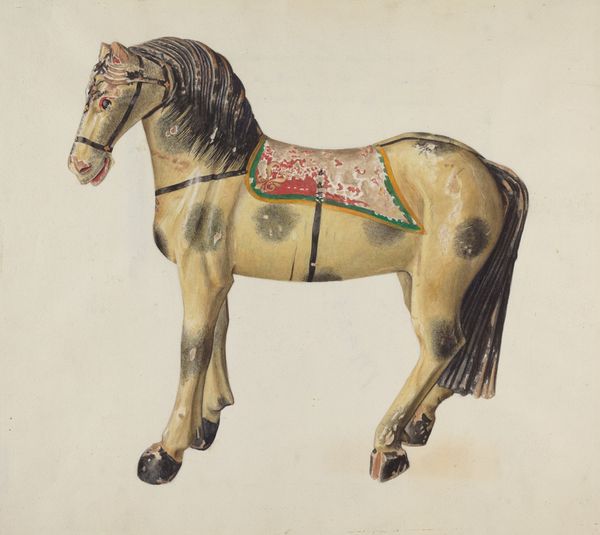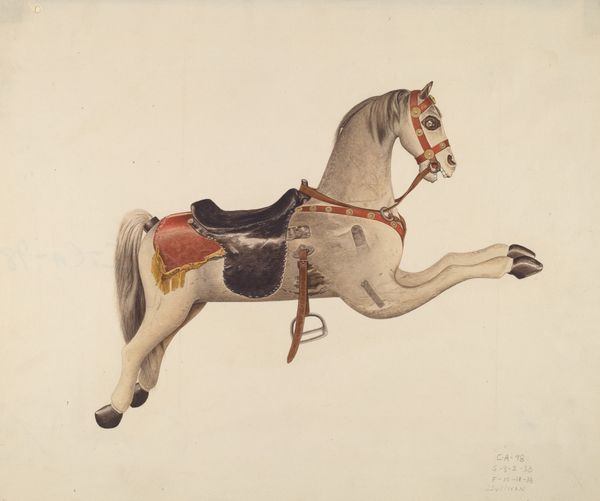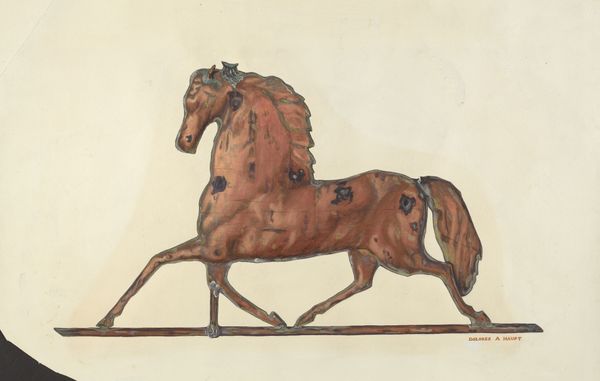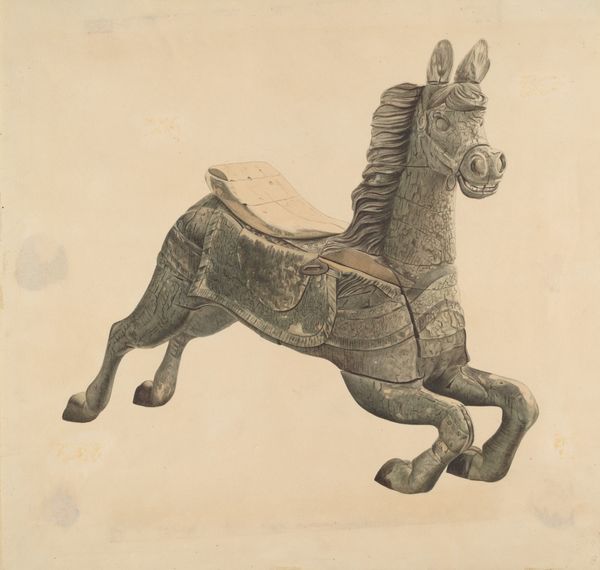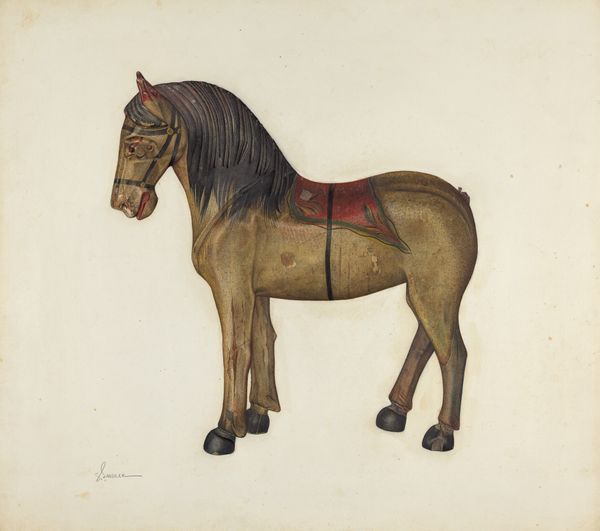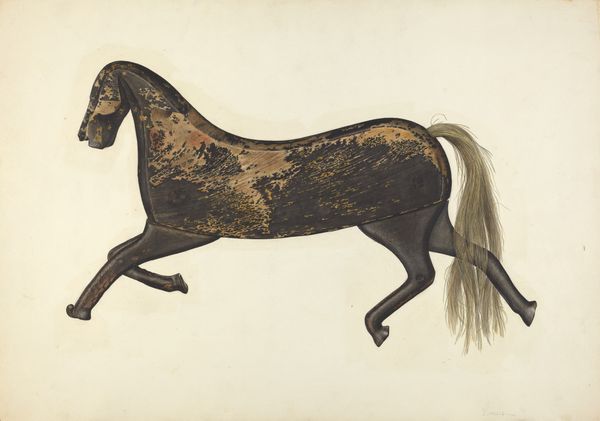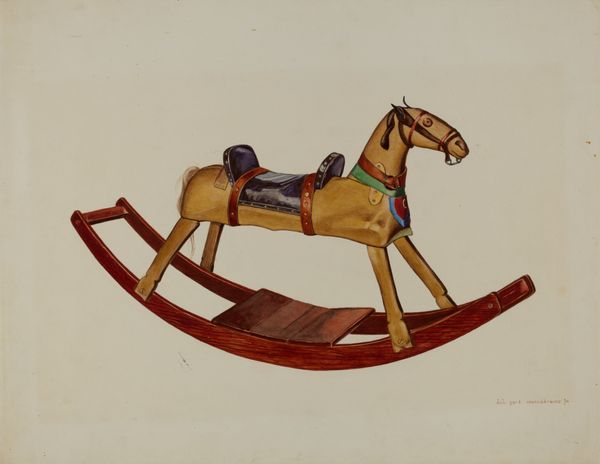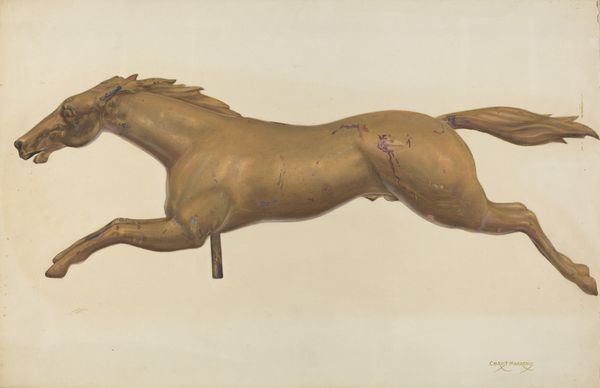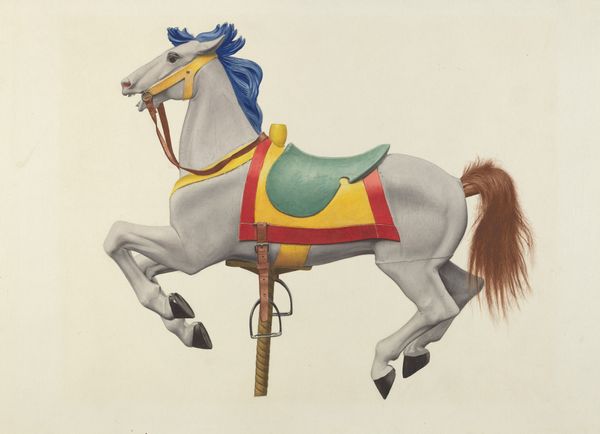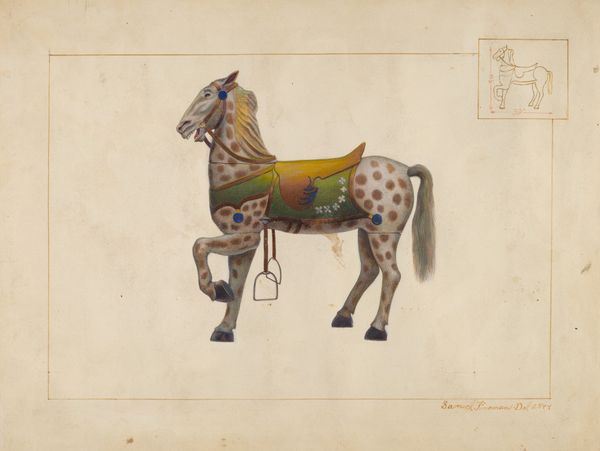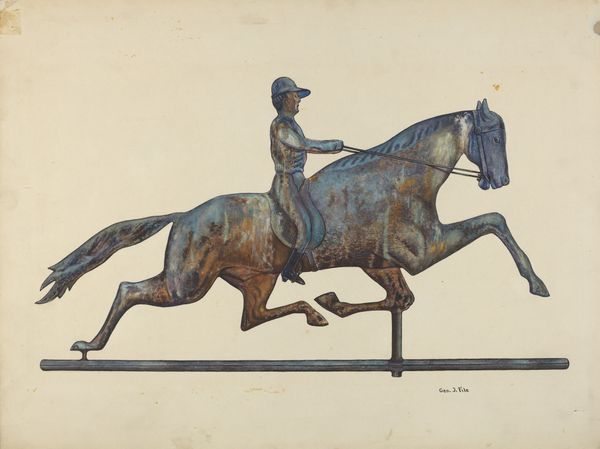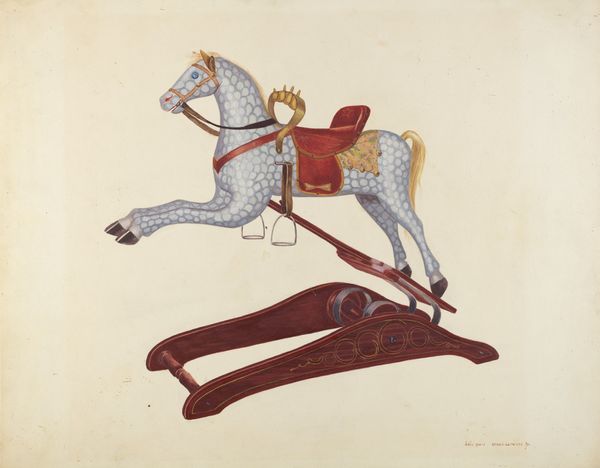
drawing, coloured-pencil, watercolor
#
drawing
#
coloured-pencil
#
charcoal drawing
#
figuration
#
watercolor
#
pencil drawing
#
coloured pencil
#
watercolor
Dimensions: overall: 40.6 x 51.1 cm (16 x 20 1/8 in.) Original IAD Object: 48" (approx)
Copyright: National Gallery of Art: CC0 1.0
Curator: Immediately striking is how solitary it appears against the blank background, and I'm curious about the color. Editor: This is Henry Tomaszewski's "Carousel Horse," created around 1938 using primarily watercolor and colored pencil. What can you tell us about the material presence here? Curator: The depiction itself is relatively simple, though precise—the horse lacks context, stripped of its carnival atmosphere. It emphasizes the physicality of the object; you can almost feel the smoothed wood grain and imagine the process of layering the paint and decorations. What narrative do you see in its isolation? Editor: It definitely evokes a sense of suspended animation. Toys, particularly those designed for amusement parks, exist in a peculiar space, right? Meant to be ridden and experienced communally, yet here, it's a static object divorced from its intended purpose. Its very essence as something joyous feels momentarily neutralized, doesn't it? It highlights a broader discussion, maybe about leisure, gender, class, during this time? Curator: Absolutely. Consider the production: Is this a commercially produced toy, or was it possibly made in a workshop environment? If we consider its material makeup, the woods selected, paint applied, those hands constructing would signify an entire network of labor behind the symbol. Does that make the horse itself a locus for thinking through that socioeconomic structure, a sign of a system in some way? Editor: Certainly. There is an eerie emptiness that might mirror the anxieties and constraints many people faced. It brings attention to not just the item as decorative, but it invites us to see these social conditions made tangible and representative through object culture. I think there's also a link to children's roles and expectations that we need to recognize when looking closely at this artifact of childhood play. Curator: True, considering play itself as labor. I come back to that solitary depiction—absent any figures or surroundings, just a floating object stripped bare... And what can that object reveal to us? Editor: Yes. It underscores the complexity of everyday artifacts and the myriad stories contained. It's like that stillness implores a reevaluation.
Comments
No comments
Be the first to comment and join the conversation on the ultimate creative platform.
